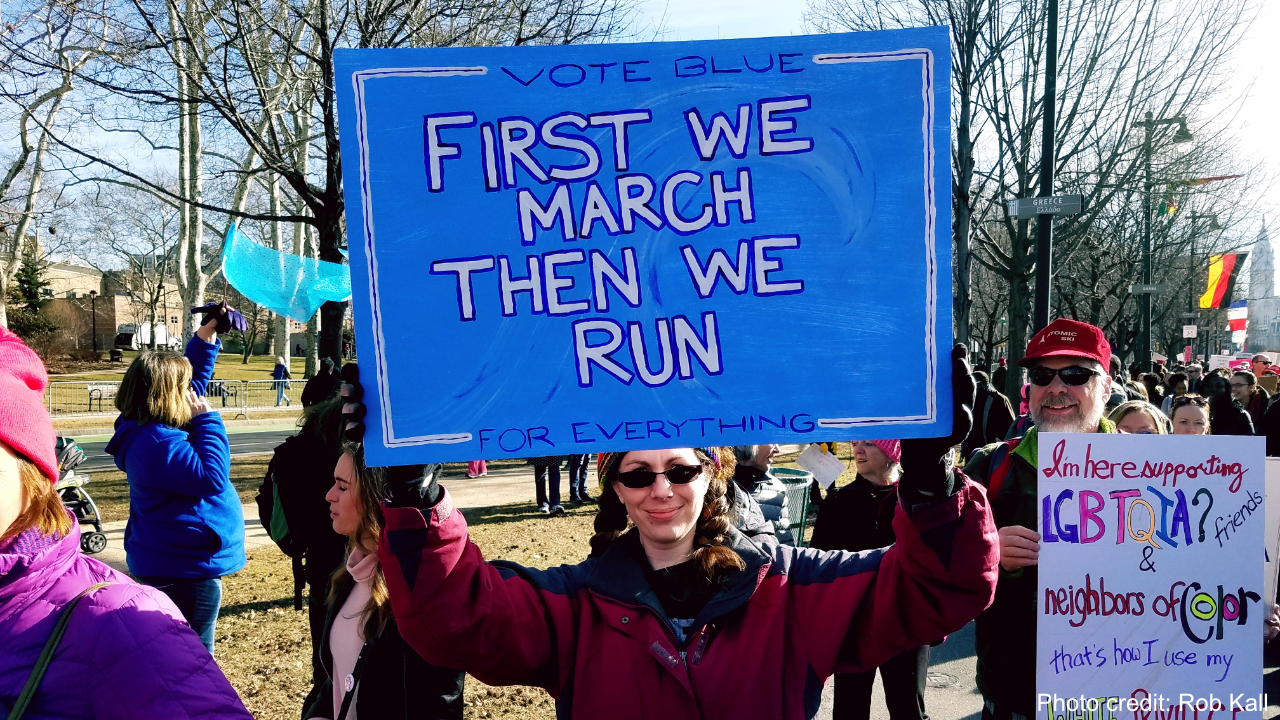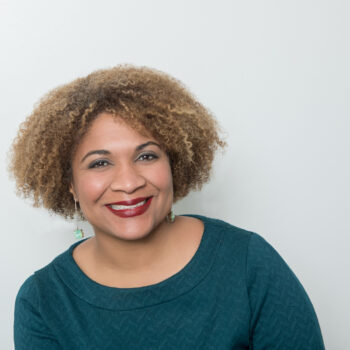It’s been a year since the Senate confirmed Judge Brett Kavanaugh to a lifetime position on the Supreme Court and many emotions from the unprecedented hearings and the process to confirm him are returning. I will never forget sitting just a few rows behind Dr. Christine Blasey Ford, watching her give testimony with unimaginable strength and grace. And I will never forget the power, anger, and generosity of the #MeToo movement that continues to grow stronger.
Dr. Ford shared the most traumatic experience of her life – with millions of people hanging on her every word. She was both a witness and a teacher, revealing her own experiences but also explaining the lingering effects of trauma on survivors. Her testimony resurrected memories of their own abuse for many who watched her testimony. And some were getting ready to break their silence, too.
There are several reasons why so many survivors of sexual assault and harassment keep their stories buried deep within. In fact, the most common response is to tell no one. Nearly 80 percent of rapes and sexual assaults go unreported, according to a Justice Department analysis of violent crime in 2016. But during Dr. Ford’s testimony, many Senators appeared disinterested in the extensive body of evidence that explains the historic silencing of survivors. This was just one of the many features of a Senate process that failed to treat Dr. Ford’s testimony with the seriousness it deserved.
Brett Kavanaugh’s confirmation process proved to be a pivotal test for the women’s movement. We had already witnessed #MeToo go viral the year before and the creation of TIME’S UP and the Time’s Up Legal Defense Fund, which was receiving thousands of requests for legal help from workers – mostly women – who had experienced sexual harassment and abuse on the job. But, simultaneously, the media predicted that the overdue reckoning around sexual violence was fading. The press presented Kavanaugh’s elevation to the Supreme Court as a foregone conclusion -before a single day of hearings had even occurred. We knew that our movement and resolve were strengthenin – and that we were just getting started.
At the National Women’s Law Center, where I lead a group of committed lawyers and advocates, we know the stakes of a Supreme Court nomination process, for women and girls, but also for our very democracy -and we did not take Kavanaugh’s nomination lightly. Our detailed research into his judicial record caused serious concern. His opinions and writings had shown deep hostility to reproductive rights, the Affordable Care Act, and workplace protections — among other important areas of the law that shape the experiences of women and girls in this country. And yet somehow the Republicans in the Senate refused to seek access to millions of pages of documents from Kavanaugh’s record. In the race to confirm him to a lifetime position on the Supreme Court, the institutions were ignoring the very people whose lives would be affected by his decisions for a generation. We deserved a process that was as serious as the stakes.
I vividly remember the first day of the Kavanaugh hearings. A large group of women leaders across the progressive movement packed into the Senate atrium, just outside the hearing room, to capture the attention of the Senate and the public by highlighting what was at stake for women in this nomination. We talked about our families, our loved ones. And about the Supreme Court’s role in the institutions that shape women’s lives — and its impact on how women are treated at work and in school, their ability to access health care, including reproductive care, the ability and freedom to marry and determine when, whether or how to parent. I felt an instant sisterhood that our movement often strives for but doesn’t always reach — and it would guide and sustain us over the course of the tough weeks ahead.
What’s remarkable is how quickly this first gathering came together. One night, I reached out to dynamic women leaders across the social justice movement to initiate the idea of staging a peaceful assembly of women near the Senate hearing room. Over the course of three days, we had organized hundreds of women leaders to come together to make a case against Kavanaugh’s nomination. This gathering showed us that we knew how to show up and speak out. And, in retrospect, it foreshadowed the resilience and strategic know-how of the women’s movement to quickly mobilize throughout the course of the hearings.
The broad women’s movement held this fight together and elevated the significant threats before us. Women showed up again and again to hold space for each other. I’ll never forget the Rise up for Roe bus tour in the dead of summer; my stop was in Maine where people gathered to share their abortion stories and talk about access to abortion care. I’m still in awe of the creative dedication to Dr. Ford and to all survivors, as seen in hashtags she inspired like #WhyIDidn’t Report.
Just 12 days after women leaders gathered on the Hill, Dr. Blasey Ford’s name and the outlines of her sexual assault allegation against Kavanaugh were revealed in the Washington Post. Eleven days later, Dr. Ford testified before the Senate Judiciary Committee — nearly three decades after Professor Anita Hill had done the same. But this time, the Senate had an opportunity to get it right and avoid repeating the wrongs that were done to Anita Hill. I wanted to believe that Dr. Ford’s experience would be different from hers. The amplification of Tarana Burke’s #MeToo movement bolstered my faith. Unlike 1991, when Professor Hill provided testimony, today’s survivors had practice expressing solidarity with those who named their experiences and demanding accountability. Institutions were also showing signs of action, even when the allegations involved influential and high-profile men. Harvey Weinstein, of course, was the most notorious, but he is only one of many “untouchables” who were unable to survive the scrutiny of their conduct.
We know what happened next. The White House, together with the all-male slate of Republicans on the Senate Judiciary Committee, stuck to the 1991 playbook and circled the wagons. Dr. Ford provided hours of credible and compelling testimony, but in the end, we were left with a sham FBI investigation that intentionally ignored evidence and crucial leads in order to rush the confirmation of Kavanaugh to a lifetime appointment. The public and the Supreme Court were denied a full accounting.
Brett Kavanaugh was confirmed to the Supreme Court by the narrowest margin in modern history -50 to 48 — on October 6, 2018. As the final vote was being tallied, I couldn’t bear watching it firsthand in the Senate gallery. Instead, I attended a boisterous rally outside the Supreme Court. When it was my turn to speak, I walked to the podium and thanked Dr. Ford and all survivors for their strength and grace. I felt a mix of intense anger because the Senate had betrayed us and profound gratitude to the survivors and activists who had worked so hard to change the outcome. And, yes, I cried.
Almost a year later, in mid-September 2019, the New York Times reported that its 10-month investigation had uncovered a previously unreported allegation against Brett Kavanaugh and identified several of his Yale classmates who have information that corroborates some of the sexual misconduct allegations against him. One former classmate tried desperately to alert the FBI about his own knowledge of Kavanaugh’s misconduct in the days before the final vote. But he never heard back from the F.B.I. In early October 2018, Senator Chris Coons, Democrat of Delaware, sent a letter to the F.B.I.to report that he had “information relevant” to the inquiry — but he never heard back either.
None of this news shocks any of us who worked on this nomination. From the beginning, we understood how necessary it was for a serious, fair and impartial investigation. A year after Kavanaugh was sworn in, we are calling on Congress to finally do the right thing and conduct a full and complete investigation into the allegations of sexual misconduct and the many ways the Senate process failed.
Looking back, the Senate confirmation process came at a huge cost to this country. Public confidence in our institutions has plummeted, the Senate has demonstrated its inability to function, and the Supreme Court has become more politicized.Yet, I remain optimistic.
A year after the hearings, I see the promise of a movement fueled by sisterhood. Women are at the vanguard of political progress across the country — and it’s exciting to see this energy and power flourish. Women are marching, voting, running for office — including for the presidency — in unprecedented numbers and advocating for policies that lift women up and benefit everyone.
And just as women pounded on the doors of the Supreme Court on the day Kavanaugh was sworn in, they will keep pounding on the doors of institutions across America until these changes are finally realized.

